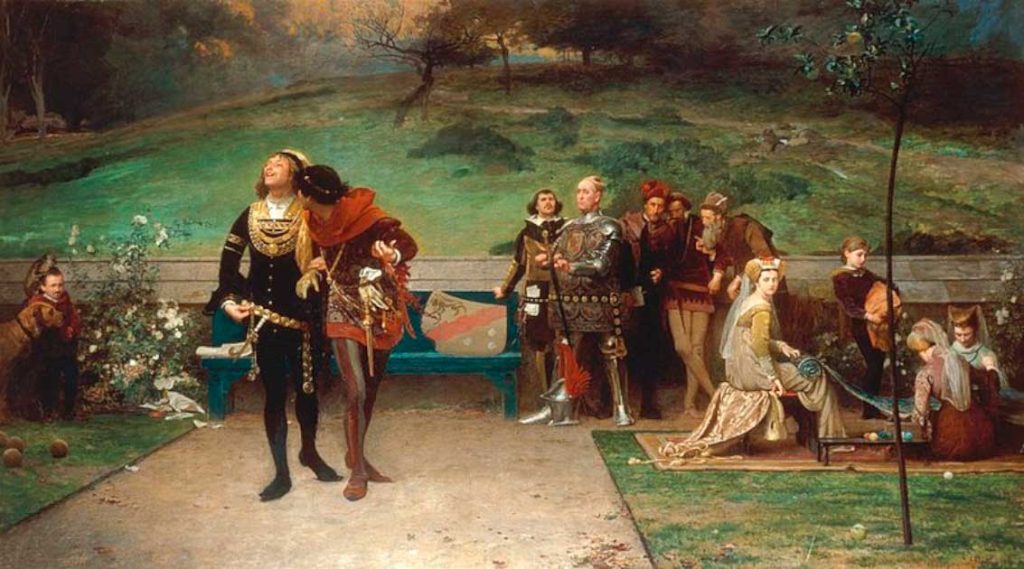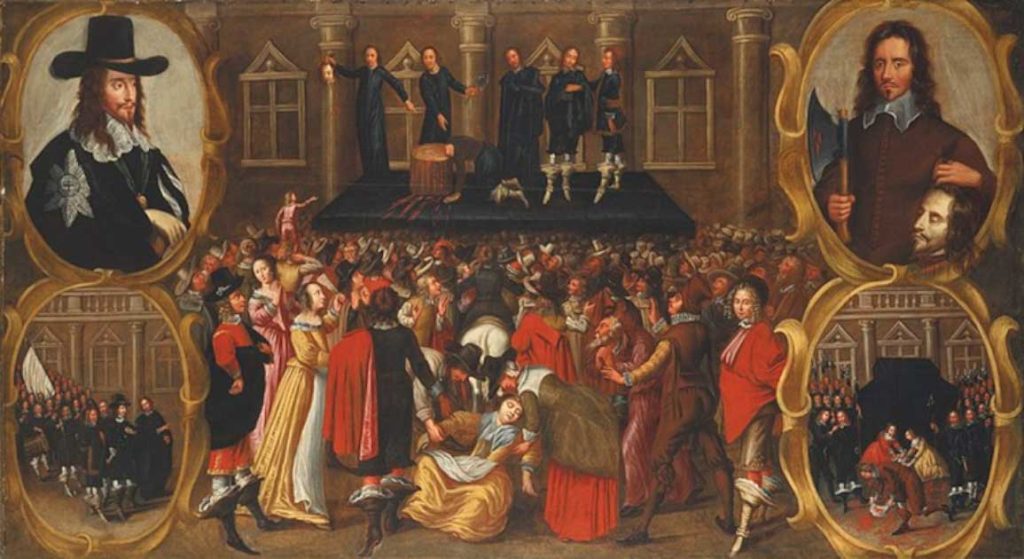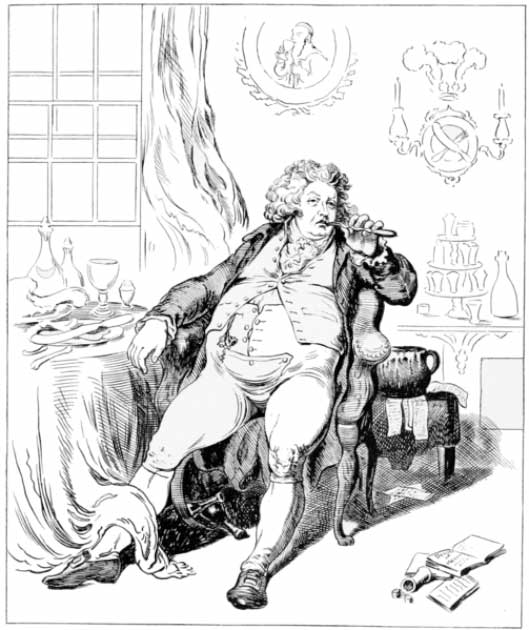“Uneasy lies the head that wears the crown.” Shakespeare gave this line to his most rumpled of kings, Henry IV, as he sits contemplating his state, a king by usurpation facing recalcitrant nobles and a tearaway son, unsure that his actions in overthrowing God’s anointed representative were just.
But in the 1,000 years since the Norman Conquest, there has been a lot of overthrowing. Not for England the smooth transition from generation to generation, but a history filled with bloodshed, with rebellion, and with murder. England’s, and later Britain’s, history is a bloody one.
Kings have been murdered, and have disappeared more than once. Some have been cut down on the battlefield, some tortured to death. Some died under highly mysterious circumstances, and one was even publicly executed by his people.
These are eight of the rulers of England who met with tragic ends.
1. William II
The son and heir of Willian the Conqueror, William II (known as “The Rufus” for his red hair) was in a difficult position from the start. Is kingdom, won by conquest by his bellicose father, was filled with an unhappy populace and a nobility seething at their new overlords.
So it was hardly surprising that William II did not enjoy a long and happy reign, but it seems to have been the Norman invaders who killed him. Although he ruled for more than a decade, he would meet his maker while hunting in the New Forest, with an arrow through the lung.
Accidents do happen, though, and maybe he was just unlucky. Well, it would seem now. His companions on the hunt, his nobles and supposedly friends, left his body lying in the dirt, so keen were they to hasten to Winchester along with William’s younger brother Henry to secure the royal treasury. Henry became Henry I, and the rest was history.
2. Edward II
Edward I, known as “Hammer of the Scots” for his brutal and merciless campaigns, was a fierce and powerful king. The castles he built to subdue Wales stand as massive, near indestructible piles of masonry to this day, and his famed “Warwolf”, built to attack Stirling Castle in Scotland, is perhaps the largest trebuchet ever made.

Edward died while still campaigning, but it seems his son Edward II was cut from a very different cloth. Edward had a favorite named Piers Gaveston, and the pair were rumored to be lovers. This created friction between Edward and his powerful nobles, who succeeded in having Gaveston banished twice and finally executed in 1312.
Edward’s wife, the French Queen Isabella, betrayed him and landed in England at the head of an army, and with a new lover to boot. Edward’s support collapsed, and he was captured and forced to abdicate in favor of his son. Imprisoned at Berkeley Castle, he was murdered in 1327. It was said that he was killed by a red hot poker forced up his backside, in punishment for his dalliances with Gaveston.
3. Richard II
Powerful nobles were again a problem a century later, with Richard II. A youthful king, his incredibly expensive wars with Ireland drained the public purse and in order to finance them Richard started disinheriting his nobles.
John of Gaunt, a major landowner and power broker in Richard’s reign, had his lands seized upon his death and his son, Henry Bolingbroke, the King’s cousin, was disinherited and banished. Bolingbroke, incensed at this, returned at the head of an army and seized the crown, becoming Henry IV.
Richard was imprisoned and it seemed that the new king was prepared to let him live, regicide apparently being a step too far. But when a high level plot was uncovered to kill Henry and reinstate Richard, the old king had to go. Richard II was starved to death in a cell in Pontefract Castle in the year 1400.
4. Henry VI
Henry IV’s grandson, Henry VI, was an infant king. His reign saw extreme mismanagement of the perennial war with France by his nobles and regents, and eventually England collapsed into civil war between the rival houses of York and Lancaster, in what is known as the Wars of the Roses.
Henry VI was not a well man, either, and apparently suffered from a series of mental breakdowns. After he collapsed into catatonia after the loss of a key French territory, his reign fell apart and a Yorkist rival declared himself Edward IV in 1461.
Henry spent much of his later life in the Tower of London as an effective prisoner, however he would be briefly reinstated as king after nine years in 1470. When Edward IV won back the throne a year later, Henry could not be allowed to live. When Edward arrived in London, he was informed that Henry had unexpectedly died. Handy, that.
5. Richard III (and bonus Edward V)
Edward IV had a real opportunity to stabilize his reign following the death of Henry VI, the head of a powerful and wealthy landowning family with a legitimate claim to the throne of England and powerful backers both at home and abroad. Sadly all this was undone by his younger brother, Richard of Gloucester.

Edward’s heirs, the new king Edward V and Richard of York, are the famous “Princes in the Tower” who mysterious disappeared while under Gloucester’s supervision. While there has been some discussion it is generally thought that Gloucester had the young boys killed. What is certain is that after their disappearance he became Richard III, and tore a bloody swathe through his house of York.
Richard would meet his end in a reckless charge at the Battle of Bosworth Field. Pulled off his horse and stabbed to death, he was the last English king to die on the battlefield. The victor, Henry Tudor, became Henry VII and founded a dynasty which would last for more than 100 years.
6. Queen Mary
The Tudors are often seen as a “Golden Age” for England, rulers who saw a boom in exploration, wealth and military prowess, and a cultural boom as well. However, much of this comes with the benefit of hindsight, particularly following the long and successful reign of the last Tudor, Queen Elizabeth I.
- Why Some Think Queen Elizabeth I Was A Man
- The Glorious Revolution: Did the Dutch Steal the English Crown?
Mary I, Elizabeth’s half-sister, ruled for five years before Elizabeth, given order of precedence because she was older and the daughter of Henry VIII’s first marriage. Her rule almost saw the overthrow of the new Church of England and the restoration of the Catholic monasteries in England, and her Spanish husband saw a close alliance with Catholic Spain, homeland of her mother.
However Mary end was tragic. Yearning for a child, she believed herself to be pregnant and had she truly had a Catholic heir European history could have been very different. However, the growth inside her was not a child but cancer, and she died painfully and without heir. Elizabeth came to throne, and in cementing her father’s religious policy changed the course of English history forever.
7. Charles I
The only English king to have been sentenced to death by his people, Charles I was a king who did not move with the times. But in his defense his lofty assumptions about his position of authority and the divine right to act accordingly had never been tested in this fashion before.

England’s Parliament had been around since the 13th century but its position over the centuries had been strengthened, aided by the rise of a merchant class, to the point where it was not the aristocracy who held power, it was the people.
Charles’s quarrels with Oliver Cromwell and Parliament, which led to all-out civil war, were the first instance of the people of England refusing to accept a tyrannical ruler just because of his position. Stripped of his perceived authority, Charles lost the civil war, and was tried for treason. Found guilty, he was beheaded outside the Banqueting House in Whitehall, in the center of London, in front of a crowd of commoners.
8. George IV
The Mad King George III is well known, but by almost any standards his reign was a successful one. Only English queens have ruled longer than George III, namely Victoria and Elizabeth II, and his madness only incapacitated him for several distinct periods during this long reign.
For the last ten years of George III’s life, his son ruled in what is known as the Regency Period. However George the Prince Regent, later George IV, would have a downfall entirely self-wrought. George IV would essentially eat himself to death.

Grossly obese, addicted to laudanum and alcohol, half blind from cataracts and despised by his servants and courtiers who thought him one of the worst kings ever seen, George ballooned to 20 stone (130 kg; 280 lb). He was finally killed with an enormous bowel movement, dying on the toilet like a Regency Elvis.
Top Image: Charles I, the only English king to have been executed for treason, blandly observed his own execution in this painting by Gonzales Coques Source: Gonzales Coques / Public Domain.
By Joseph Green